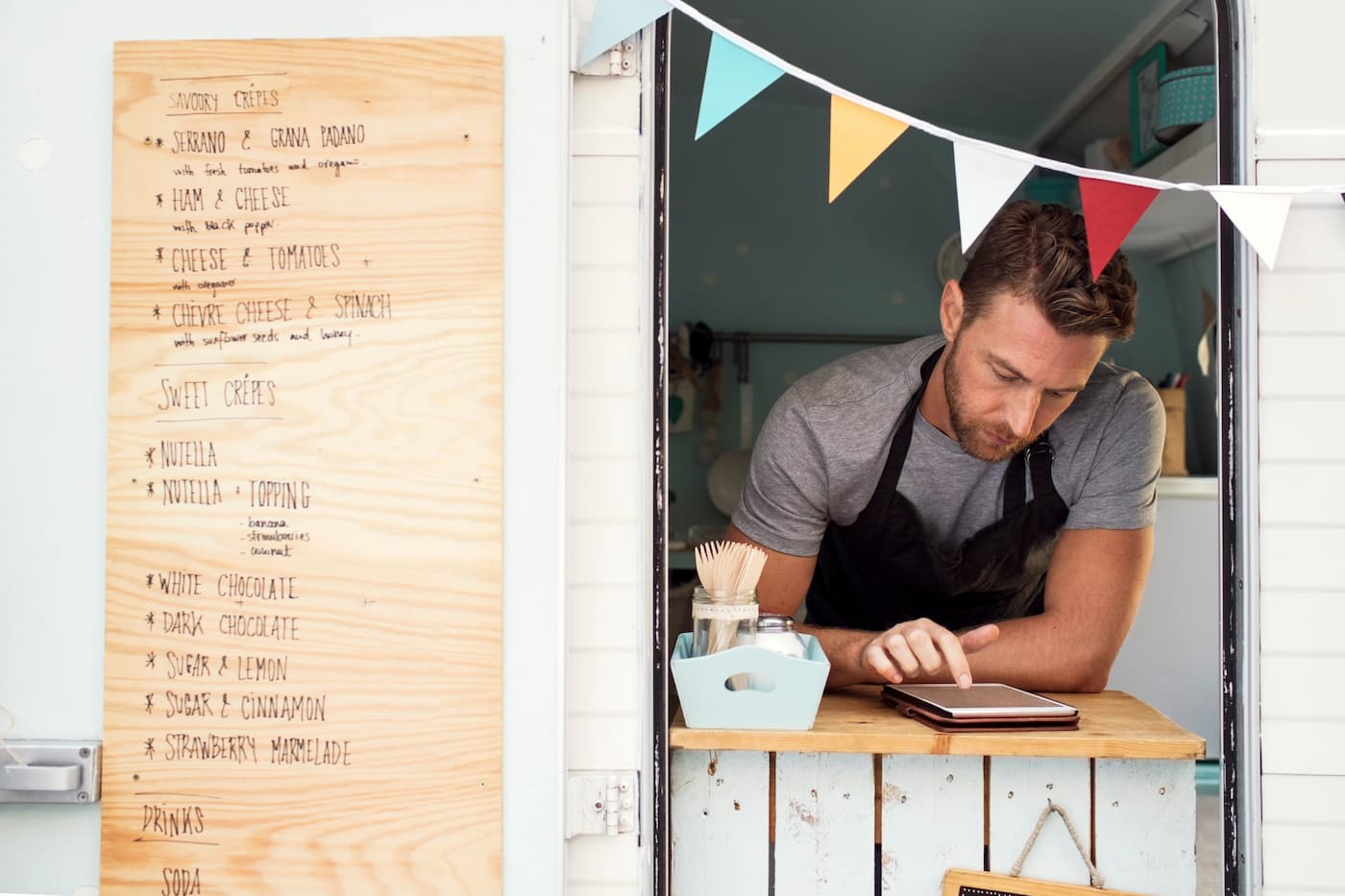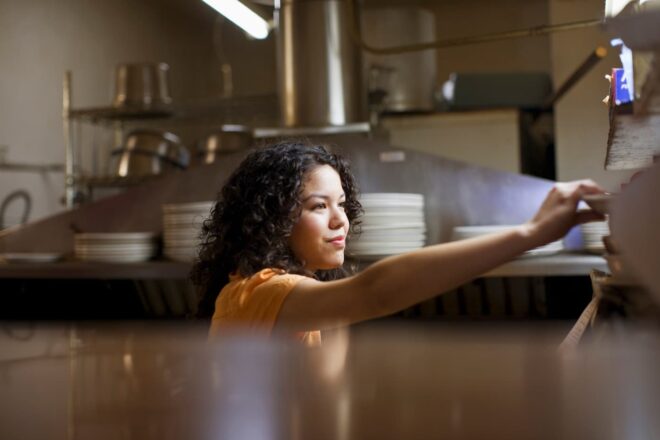Tips and tricks for opening an outdoor pop-up restaurant
Editorial Team
8 min read
Outdoor restaurant pop-ups are an innovative trend sweeping the culinary world. Imagine savoring gourmet dishes in a picturesque park setting, with the sun shining and the sound of a buzzing city in the background. This idyllic experience is what outdoor restaurant pop-ups offer—a temporary, often mobile setup where chefs and restaurateurs bring their culinary creations directly to the public in an unexpected way.
Join us as we explore what these pop-ups are, how they work, their benefits, and provide practical advice on location selection, marketing, and legal requirements.
What is an outdoor pop-up restaurant?
As mentioned before, outdoor restaurant pop-ups are temporary dining setups located in parks or outdoor spaces, offering a unique culinary experience outside the traditional brick-and-mortar environment. These pop-ups can range from a single chef’s table to a mini food festival featuring multiple vendors.
Historically, these pop-ups started as a way for chefs to test new menu items and restaurant concepts without committing to a long-term lease. They can also act as a way to create an additional revenue stream and market an existing restaurant business in an unexpected manner.
The outdoor setting adds an extra layer of appeal, combining the allure of nature with culinary adventure. Whether it’s a gourmet picnic setup, a street food fair, or a fine dining experience under the stars, outdoor restaurant pop-ups have evolved to offer a wide array of dining experiences customers crave.
How do pop-up restaurants work outdoors?
It may not come as a surprise that the process of bringing an outdoor restaurant pop-up to life includes a variety of details you wouldn’t typically think about.
Like any pop-up, the process usually starts with securing a location and obtaining necessary permits. Next, the organizer sets up the infrastructure, including cooking and dining areas ahead of the event. On the event day (or days!), chefs prepare and serve food on-site, allowing diners to enjoy freshly made dishes in a unique outdoor setting.
The operational structure of an outdoor pop-up restaurant can vary, but some common elements include:
- Flexible locations: They can be set up in various outdoor locations, such as parks, beaches, gardens, or any open space that permits such events.
- Collaborative effort: Pop-ups often involve collaboration between chefs, local farmers, food vendors, brands, and event organizers to create a unique and cohesive dining experience.
- Mobile equipment: Essential equipment such as portable kitchens, food trucks, tents, and seating arrangements are used to create a functional and comfortable dining environment in uncommon spaces.
- Portable POS: Your outdoor pop-up restaurant wouldn’t be a success (or profitable) without the ability to seamlessly take mobile payments.
- Sanitation stations: Handwashing stations and waste disposal units to maintain hygiene to avoid health code violations.
Benefits of outdoor pop-ups for restaurants
For both established restaurants and potential new ventures, outdoor pop-ups offer numerous advantages with minimal risk. These can include anything from testing a new concept that is a spinoff of an existing establishment as well as using it as an opportunity to see if a certain location is right for your future brick-and-mortar.
Cost-effective testing ground
Pop-ups provide a low-risk, low-cost opportunity to test new menu items as well as potential restaurant concepts. Without the need for a long-term lease or extensive renovations, chefs can experiment and gather feedback from diners. This is made easier with the right POS software, which can collect feedback for you by text or email.
Increased visibility and brand awareness
Operating in a high-traffic public area helps attract a diverse crowd, increasing brand exposure. It’s an excellent way for new restaurants to introduce themselves to the community or for established ones to reach new customer segments.
Direct customer interaction
Pop-ups offer a unique opportunity for chefs and restaurateurs to engage directly with customers. This interaction can help build a loyal customer base and provide valuable insights into customer preferences.
Flexibility and reduced overhead
With no permanent location, outdoor pop-ups offer greater flexibility and significantly lower overhead costs compared to traditional restaurants. This can allow restaurateurs to allocate more resources to quality ingredients and innovative culinary techniques that set their pop-up apart from others.
How to choose an outdoor pop-up restaurant location
Pop-up restaurant locations are crucial for the success of any culinary pop-up and can make or break its success. Here are some key factors to consider before launching one of your own:
Foot traffic
High foot traffic areas ensure a steady stream of potential customers. Parks located near commercial districts, tourist attractions, or residential areas tend to draw larger crowds.
Demographics
Understanding local demographics can help determine if your offerings would do well in a certain area. For example, a family-friendly park may benefit from kid-friendly menu options, while an urban park frequented by young professionals might thrive with trendy, gourmet offerings.
Local competition
Assessing the local food scene can help identify gaps in the market or if it is oversaturated. Setting up in an area with limited dining options can attract more customers, while too much competition might require a more distinctive concept to stand out as a restaurant pop-up.
Proximity to events
Aligning the pop-up with local events, festivals, or holiday activations can potentially boost your attendance. For example, setting up during a music festival or a community fair can provide a built-in audience.
Marketing your restaurant pop-up
Marketing your outdoor restaurant pop-up is essential to attract diners and build anticipation or “pre-hype” for your event. This can be accomplished with anything from traditional marketing tactics, such as flyers and local media to engaging with your audience online through social media by sharing sneak peeks and special offers.
Creating a marketing strategy
If you do not have an existing restaurant marketing plan, start with a clear marketing strategy that outlines your goals, target audience, and key messages. This will include identifying the best channels to reach your audience as well as creating a timeline for your selected marketing activities prior to popping up.
Utilizing social media and digital marketing
Social media platforms such as Instagram, Facebook, and Twitter are powerful tools for promoting your pop-up. Share enticing photos of your dishes, behind-the-scenes content, and event details to help increase your overall attendance. It can be helpful to also use hashtags and engage directly with your followers to build up excitement.
Collaborating with culinary influencers and food bloggers
Partnering with influencers and food bloggers can amplify your reach. Try inviting them to your pop-up for a preview and encourage them to share their experience with their followers online. Making your pop-up restaurant menu items as photogenic as possible can help encourage photos, which you can then re-share to promote your pop-up.
Traditional marketing methods
Don’t overlook traditional marketing methods, such as flyers, posters, and local media. Distribute flyers in high-traffic areas and community centers, and reach out to local newspapers and radio stations to feature your pop-up. You might just get your 15 minutes of fame and a line wrapped around the block for your food.
How to open a pop-up restaurant legally
Do you need a license for a pop-up restaurant? Absolutely!
Operating a restaurant pop-up may seem like all fun and games but does involve navigating various legal requirements to ensure compliance and safety. Some of these pop-up restaurant regulations include permits, licenses, and insurance to ensure the legality of the pop-up as well as sanitation stations and fire safety to support attendee wellbeing.
Starting with the following areas can help you ensure all of your bases are covered prior to opening your pop-up, but be sure to research your local laws and regulations. Here is what you should consider:
Permits
- Health permits: Obtain health permits from local health departments to ensure food safety and hygiene standards are met.
- Business licenses: Secure a pop-up restaurant license to legally operate your concept and avoid potential issues.
- Event permits: Pop-up restaurant permits have the potential to make or break your activation. Depending on the location, you may need an event permit from the local parks department or municipality.
Insurance
- Liability insurance: Believe it or not, but “pop-up restaurant insurance” is a thing and protects against potential lawsuits from accidents or injuries that may occur.
- Worker’s compensation: Covers medical expenses and lost wages for employees injured on the job.
Safety regulations
- Food handling: Ensure all food handlers have proper training and certifications.
- Fire safety: Adhere to fire safety regulations, including having fire extinguishers and proper ventilation for cooking equipment.
Running a pop-up restaurant is easier with Clover
Outdoor pop-up restaurants offer a unique and flexible way to bring culinary creations directly to the public, providing endless benefits for both established and budding restaurateurs.
By carefully selecting the right location, creating a marketing strategy, and ensuring compliance with legal requirements, you can create a successful and memorable outdoor pop-up dining experience that leaves customers dazzled.
But what about your daily operations? From scheduling your pop-up team to managing inventory to ensure you have all the ingredients you need, the right mobile POS system can do this and more! Providing you with the ability to manage your pop-up business and seamlessly take payments, keeping your lines down and your orders up!
Why wait? Elevate your business and get started with Clover POS systems today.
This information is provided for informational purposes only and should not be construed as legal, financial, or tax advice. Readers should contact their attorneys, financial advisors, or tax professionals to obtain advice with respect to any particular matter.
Related Posts
Full Service Restaurants (FSR)
How to write a great restaurant shift report (with an example)
Full Service Restaurants (FSR)
6 tactics for unifying the front and back of house for restaurants
Popular Topics
Stay in touch
Sign up and learn more about Clover.
Thank you for your subscription!
More posts about starting a small business
eBook





